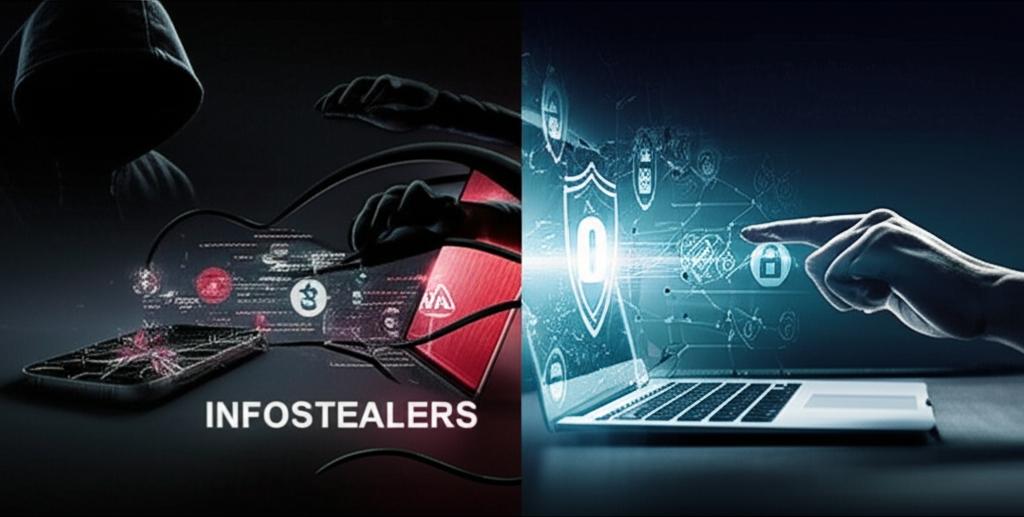Critical Safeguards: Defeating Infostealers with Proactive Prevention
Understanding and Counteracting the Infostealer Threat
In today’s interconnected digital world, our personal and professional lives are increasingly online. While this offers unparalleled convenience, it also exposes us to sophisticated cyber threats. Among the most insidious are infostealers – malicious software designed to pilfer sensitive data from your devices. These silent predators can compromise everything from your banking credentials and credit card numbers to personal documents and crypto wallets, leading to devastating financial loss and identity theft. This article will equip you with the essential knowledge and actionable strategies to prevent and mitigate the threat of infostealers.
What Are Infostealers?
Infostealers are a category of malware specifically engineered to locate, collect, and exfiltrate sensitive information from a compromised system. Unlike ransomware, which encrypts data for ransom, or traditional viruses that damage systems, infostealers aim to steal data without the user’s immediate knowledge, often operating covertly in the background. They are a significant component of the cybercrime ecosystem, fueling black markets for stolen credentials and personal data.
How Infostealers Operate
Infostealers employ various techniques to achieve their objectives:
- Keylogging: Recording every keystroke made by the user, capturing passwords, credit card numbers, and sensitive communications.
- Browser Data Theft: Extracting saved passwords, autofill data, cookies, browsing history, and credit card details stored in web browsers.
- File Collection: Searching for specific file types (e.g., documents, images, cryptocurrency wallet files) and uploading them to a remote server.
- Screenshot Capture: Taking screenshots of active sessions, potentially capturing sensitive information displayed on the screen.
- Credential Dumping: Harvesting login credentials from operating system processes, memory, and installed applications.
- Clipboard Monitoring: Stealing data copied to the clipboard, which often includes sensitive text.
Prevention Strategies: Building a Robust Defense
Proactive prevention is your strongest weapon against infostealers. Implementing a multi-layered security approach significantly reduces your vulnerability.
1. Strong Password Policies and Management
- Unique, Complex Passwords: Use a different, strong password for every online account. Combine uppercase and lowercase letters, numbers, and symbols.
- Password Manager: Employ a reputable password manager to generate, store, and auto-fill complex passwords securely. This not only strengthens your passwords but also protects against keyloggers by reducing manual typing.
2. Multi-Factor Authentication (MFA)
Enable MFA on all accounts that support it, especially for email, banking, social media, and cloud services. Even if an infostealer steals your password, MFA provides an additional layer of security, making it much harder for attackers to gain access.
3. Keep Software Updated
Regularly update your operating system, web browsers, antivirus software, and all other applications. Software updates often include critical security patches that fix vulnerabilities infostealers might exploit.
4. Robust Endpoint Security Solutions
- Antivirus/Anti-Malware: Install and maintain a comprehensive antivirus or anti-malware suite from a trusted vendor. Ensure it’s configured for real-time protection and performs regular scans.
- Firewall: Enable and properly configure your operating system’s firewall to control network traffic and block unauthorized access.
5. Exercise Caution with Downloads and Links
- Email and Messaging Scrutiny: Be highly suspicious of unsolicited emails, attachments, or links, even if they appear to come from known contacts. Verify the sender’s identity before clicking or downloading.
- Software Sources: Only download software from official, trusted websites or app stores. Avoid third-party download sites that might bundle malware.
- USB Devices: Be wary of plugging in unknown USB drives, as they can be vectors for malware.
6. Network Security
- Secure Wi-Fi: Use strong encryption (WPA2/WPA3) for your home Wi-Fi and avoid unsecured public networks for sensitive transactions.
- VPN Use: Consider using a Virtual Private Network (VPN) when accessing public Wi-Fi to encrypt your internet traffic.
Mitigation Strategies: Responding to a Breach
Despite best efforts, a breach can still occur. Having a mitigation plan is crucial for minimizing damage.
1. Incident Response Protocol
If you suspect an infostealer infection:
- Isolate the Device: Disconnect the infected device from the internet and any networks immediately to prevent further data exfiltration or spread.
- Change Critical Passwords: From a clean, secure device, change passwords for all critical accounts (email, banking, social media, cloud services). Prioritize accounts linked to financial information or those used for password recovery.
- Scan and Clean: Perform a full system scan with your updated antivirus/anti-malware software. In severe cases, a complete system reinstallation might be necessary.
- Notify Banks and Financial Institutions: Inform your bank and credit card companies of potential compromise. Monitor your financial statements closely for suspicious activity.
- Report Identity Theft: If personal data has been stolen, report it to relevant authorities and consider freezing your credit.
2. Data Backup and Recovery
Regularly back up your important data to an external drive or a secure cloud service. This ensures that even if an infostealer compromises your system, your valuable files are recoverable.
“The greatest security lies in vigilance and continuous adaptation. In the fight against infostealers, preparedness is not just an option, but a necessity.”
Conclusion
Infostealers pose a relentless threat to our digital security, but they are not invincible. By adopting a proactive mindset and implementing the robust prevention and mitigation strategies outlined above, you can significantly fortify your defenses. Stay informed, stay vigilant, and make cybersecurity an integral part of your daily digital routine to protect your sensitive data and maintain your digital integrity.







